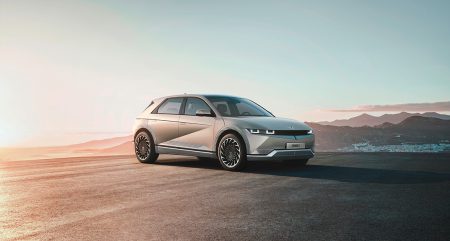I know, you probably haven’t even driven one yet, let alone seriously contemplated buying one, so the prediction may sound a bit bold, but bear with me.
We are in the middle of the biggest revolution in motoring since Henry Ford’s first production line started turning back in 1913.
And it is likely to happen much more quickly than you imagine.
Many industry observers believe we have already passed the tipping point where sales of electric vehicles (EVs) will very rapidly overwhelm petrol and diesel cars.
It is certainly what the world’s big car makers think.
Jaguar plans to sell only electric cars from 2025, Volvo from 2030 and last week the British sportscar company Lotus said it would follow suit, selling only electric models from 2028.
And it isn’t just premium brands.
General Motors says it will make only electric vehicles by 2035, Ford says all vehicles sold in Europe will be electric by 2030 and VW says 70% of its sales will be electric by 2030.
This isn’t a fad, this isn’t greenwashing.
Yes, the fact many governments around the world are setting targets to ban the sale of petrol and diesel vehicles gives impetus to the process.
But what makes the end of the internal combustion engine inevitable is a technological revolution. And technological revolutions tend to happen very quickly.
This revolution will be electric
Look at the internet.
By my reckoning, the EV market is about where the internet was around the late 1990s or early 2000s.

Back then, there was a big buzz about this new thing with computers talking to each other.
Jeff Bezos had set up Amazon, and Google was beginning to take over from the likes of Altavista, Ask Jeeves and Yahoo. Some of the companies involved had racked up eye-popping valuations.
For those who hadn’t yet logged on it all seemed exciting and interesting but irrelevant – how useful could communicating by computer be? After all, we’ve got phones!
But the internet, like all successful new technologies, did not follow a linear path to world domination. It didn’t gradually evolve, giving us all time to plan ahead.
Its growth was explosive and disruptive, crushing existing businesses and changing the way we do almost everything. And it followed a familiar pattern, known to technologists as an S-curve.
Riding the internet S-curve
It’s actually an elongated S.
The idea is that innovations start slowly, of interest only to the very nerdiest of nerds. EVs are on the shallow sloping bottom end of the S here.
For the internet, the graph begins at 22:30 on 29 October 1969. That’s when a computer at the University of California in LA made contact with another in Stanford University a few hundred miles away.
The researchers typed an L, then an O, then a G. The system crashed before they could complete the word “login”.
Like I said, nerds only.
A decade later there were still only a few hundred computers on the network but the pace of change was accelerating.
In the 1990s the more tech-savvy started buying personal computers.
As the market grew, prices fell rapidly and performance improved in leaps and bounds – encouraging more and more people to log on to the internet.
The S is beginning to sweep upwards here, growth is becoming exponential. By 1995 there were some 16 million people online. By 2001, there were 513 million people.
Now there are more than three billion. What happens next is our S begins to slope back towards the horizontal.
The rate of growth slows as virtually everybody who wants to be is now online.
Read more: BBC
It’s Time to Go Green!
If you would like to know more about Solar Panels and the PowerBanx range of home battery systems, and get a free instant quote, please complete our online form:

